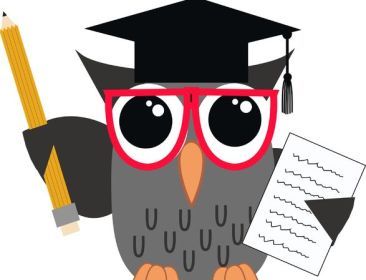 |
(123rf) |
Certain species of parrots are able to deduce by exclusion, an ability equal to that of 3-year-olds, scientists found in a recent study.
Christian Schloegl and his team of researchers from the University of Vienna conducted an experiment in which they made African grey parrots find food by inferring from given information about where it was.
They first presented the parrots with two boxes -- one of which was filled with food, and the other of which was empty -- and shook them. The parrots reliably chose the box that rattled.
Researchers found that parrots chose the baited box even when the researchers shook only the empty box and not the full one, supposedly deducing that if one is empty, the other must be full.
To rule out the possibility that the birds were simply avoiding the silent box for some unknown reason, researcher Judith Shmidt shook the boxes while wearing a speaker on her wrist that made rattling sounds. Sometimes the rattling noise would come from her right wrist, where she was holding the box, and the other times it would come from the opposite side.
The parrots picked the correct box only when the rattling sound and shaking motion matched, indicating that the birds correctly connected the shaking motion, rattling noise and the food.
In its previous experiment conducted year ago, Schloegl’s team tried to prove that parrots are able to deduce by exclusion, which previously was thought that only humans and apes could do.
They first showed the parrots two opaque cups, each containing food. After they removed the food from one cup in front of the parrots, they found that they almost always chose the second cup.
In the next experiment, researchers removed the food from one cup out of the parrots’ view, and let the parrots choose. One in seven parrots chose the loaded cup, a rate similar to that of apes.
Both findings were published in the British Royal Society’s biological research journal, Proceedings of the Royal Society B.
By Yoon Min-sik and news reports
(
minsikyoon@heraldcorp.com)
<관련 한글 기사>
충격! 새들이 이렇게 머리가 좋았다니?
앵무새 중 일부 종은 세살배기 인간아이처럼 추론을 할 수 있다는 연구결과가 나왔다.
오스트리아 비엔나 대학의 연구진이 최근 발표한 연구에 따르면, 회색앵무새는 기존에 인간이나 유인원 등만 가능하다고 여겨졌던 ‘배제로 인한 추론’이 가능하다고 한다.
연구진이 앵무새들 앞에서 먹이가 든 상자 하나와 비어 있는 상자 하나씩을 흔든 다음, 새들이 둘 중에 하나를 선택한 결과, 새들은 거의 항상 먹이가 들어있는 –- 흔들었을 때 소리가 나는 -– 상자를 선택하는 것을 관찰할 수 있었다.
연구진이 두 상자를 모두 흔들지 않고 빈 상자만을 흔들었을 때도 앵무새들은 먹이가 든 상자를 선택했는데, 이는 새들이 ‘소리가 나지 않는 상자는 비어있다’라는 추론을 했기 때문인 것으로 추정된다.
그러나 새들이 무조건 소리가 나는 상자를 선택했을 가능성이 있기 때문에, 연구진은 앵무새가 소리와 흔드는 동작을 모두 고려한다는 것을 증명하기 위한 실험을 진행했다.
먼저 연구원 중 한명인 주디스 슈미트는 오른쪽 손목 –- 빈 상자를 들고 있는 쪽 –- 소형 스피커를 찬 다음, 마치 상자 안에 먹이가 있는 것처럼 스피커를 통해 달가닥거리는 소리를 내보냈다.
그런 다음 상자를 들고 있는 손 반대쪽에 스피커를 차고 상자를 흔들었는데 이렇게 되면 상자를 흔들 때 소리는 나지만 상자를 들고 있지 않는 쪽에서 나게 된다.
그 결과 슈미트가 오른손에 스피커를 찼을 때, 즉 덜거덕거리는 소리가 상자에서 나오는 것처럼 보였을 때 앵무새들이 이 상자를 선택할 확률이 반대쪽 손목에 스피커를 찼을 때보다 월등히 높았다.
즉, 앵무새들이 단순히 소리가 쪽을 선택한 것이 아니라 ‘상자를 흔들어 안에서 소리가 난다’는 사실로 먹이의 존재를 추론했다는 가능성을 보여준다.
“인간 어린아이들은 이와 같은 추론을 3~4살 때 할 수 있는데, 앵무새들이 이러한 추론을 성공하는 확률은 3살 어린이의 그것과 비슷합니다”라고 연구를 주도한 크리스챤 슈뢰글은 말했다.
이번 연구는 영국왕립학술원의 생물학회보에 실렸다.








![[Today’s K-pop] Blackpink’s Jennie, Lisa invited to Coachella as solo acts](http://res.heraldm.com/phpwas/restmb_idxmake.php?idx=644&simg=/content/image/2024/11/21/20241121050099_0.jpg)